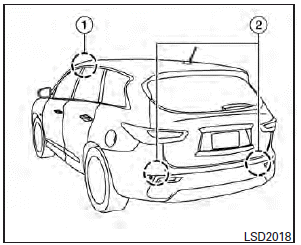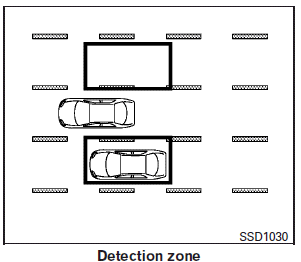The BSW and BSI systems


The Blind Spot Warning (BSW) and Blind Spot Intervention (BSI) systems can help alert the driver of other vehicles in adjacent lanes when changing lanes.
The BSW system uses radar sensors 2 installed near the rear bumper to detect other vehicles beside your vehicle in an adjacent lane. In addition to the radar sensors, the BSI system uses a camera 1 installed behind the windshield to monitor the lane markers of your traveling lane.

The radar sensors can detect vehicles on either side of your vehicle within the detection zone shown as illustrated. This detection zone starts from the outside mirror of your vehicle and extends approximately 10 ft (3.0 m) behind the rear bumper, and approximately 10 ft (3.0 m) sideways.
The BSW system operates above approximately 20 MPH (32 km/h). If the radar sensors detects vehicles in the detection zone, the Blind spot warning indicator light illuminates. If the driver then activates the turn signal, the system chimes a sound (twice) and the Blind spot warning indicator light will flash.
The BSI system operates above approximately 37 MPH (60 km/h). If the radar detects a vehicle in the detection zone and your vehicle is approaching the lane marker, the system chime a sound (three times), the Blind spot warning indicator light and slightly applies the brakes for a moment on one side to help return the vehicle back to the traveling lane.
See also:
Checking engine oil level
1. Park the vehicle on a level surface and apply the parking brake.
2. Start the engine and let it idle until it reaches operating temperature.
3. Turn off the engine. Wait more than 10 minute ...
It's the little things that count
Storage Compartments (Puny, Fair, Ample, Galore): Fair
Cargo/Trunk Space (Puny, Fair, Ample, Galore): Fair ...
Air cleaner
Air cleaner
Remove the retainers 1 as illustrated and pull out the filter element 2 .
The filter element should not be cleaned and reused. Replace it according to the maintenance intervals. See “I ...
